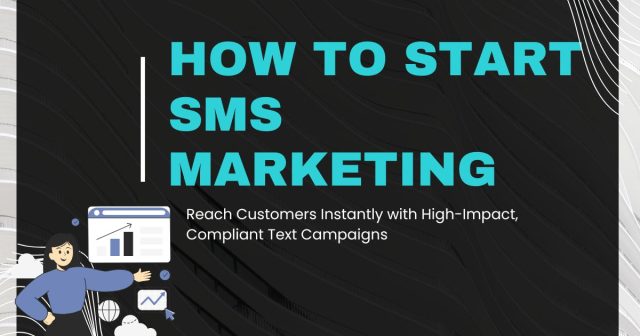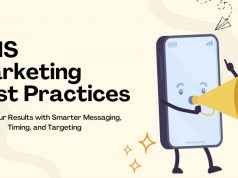SMS marketing sounds like something from the early 2000s, but it’s experiencing an unlikely resurgence. Open rates of 98% and response rates that are five times better than email marketing, text message marketing is one of the easiest ways to directly engage with customers.
Rather than social media algorithms hiding your content or emails that end up in spam, SMS messages display right on your customers’ lock screens. The plus of this immediacy is that it brings unique opportunities to engage, but it also requires a focused strategy not to over-disrupt your audience.
Beginning with SMS marketing involves more than just gathering phone numbers and message blasting promotions. It all comes down to knowing the laws and rules, selecting a proper platform, generating great content, and developing a real relationship with your list. This guide teaches you everything you need to know to get a powerful SMS marketing campaign up-and-running — one that actually produces results and respects the preferences of your customers.
Choose Your SMS Marketing Platform
Choosing the best SMS marketing platform is the key to the success of your campaign. Your messaging capabilities, compliance tools and overall campaign effectiveness will vary based on the platform you select.
Essential Platform Features
Make sure that your SMS marketing software also supports automated texting, contact list management as well as comprehensive analytics and reporting. Seek out platforms that provide segmentation capabilities, so that you can deliver targeted communications based on your customer’s actions, such as their location, gender, age, or any previous purchasing.
Integration capabilities matter significantly. Your platform of choice should easily integrate with your CRM, ecommerce platform, and everything else in your marketing stack. This unified approach allows for harmonized customer data at all touchpoints, and makes more advanced marketing automation possible.
Compliance and Security Features
When you’re looking, I’d look for a platform with TCPA (Telephone Consumer Protection Act) compliance as a requirement. Your selected solution should have opt-in handling, automatic opt-out processing and a message logging functionality. These safeguards prevent your business from getting into legal trouble and keep your customers safe.
Important are also features for security of the data. Be on the look out for providers that have encrypted transmission, secure data storage and frequent security inspections. Your customer phone numbers and private data deserve the best security there is.
Build Your SMS Subscriber List
Building up your SMS subscriber list is an art; you need to have numbers while maintaining high-quality data. Instead concentrate on bringing in truly interested prospects rather than just getting big numbers of stations.
Opt-In Strategies That Work
Opt-in by motivation Opt-ins motivated by interest always perform best. Provide additional value like exclusive discounts, sales previews or valuable content in return for phone numbers. Make it clear and make it today. “Text SAVE to 12345 for 20 percent off your first order” offers instant gratification, for instance.
The website integration gives you many chances for list building. Include SMS opt in forms in your checkout process, pop-up forms for special offers, and ensure that text message opt ins are part of your email signup forms. Cross-promote your SMS list on your current email blasts and social content.
Timing and Placement Considerations
More subscriptions are captured closer to the point of entry into the site. Place SMS signup forms at high engagement moments, when a purchase is made, during product browsing, or when a person shows exit intent. Stay away from disruptive methods that interfere with the user experience.
Think about the season and promotional timing for special opt-in campaigns. Holidays sales, product launches and special events are all natural times to emphasize the reasons for joining your SMS list.
Understand SMS Marketing Compliance
Sending promotional text messages in accordance with SMS marketing laws helps keep your business safe and customers happy. It is essential to be conscious of these pre requisites before sending out your first message.
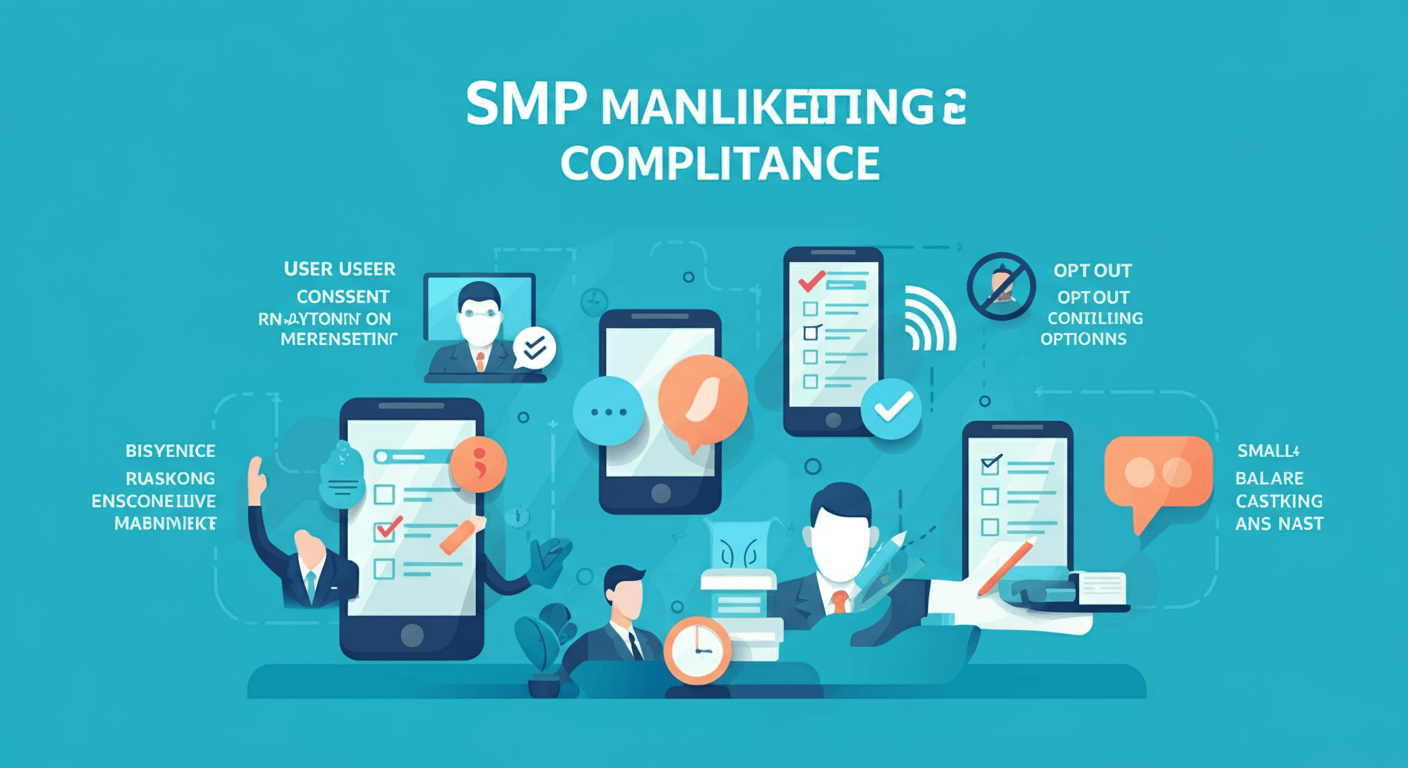
TCPA Requirements
Legally speaking, the TCPA prohibits sending unsolicited marketing messages without clear consent. That means that the customer has to have affirmatively agreed to receive your text, on the front end, and you should provide records of that customer’s consent. Pre-checked boxes or an assumption of consent isn’t the standard using the TCPA.
Written consent can be collected via web forms, text-to-join, or point-of-sale. With either approach, it’s important that the specifics of what customers are in fact opting to receive and how often they will be contacted are stipulated up front.
Message Content Guidelines
Each promotional message should contain the company’s identity and simple opt-out instructions. You should have standard opt-out language in your initial welcome message and periodic reminders — something like “Reply STOP to unsubscribe.”
Don’t use deceptive content or false sense of urgency in your messages. Time-based claims must be truthful and promotional content must accurately reflect what you’re offering. Trust is added and complaint rates are decreased by transparency.
Record Keeping Best Practices
Keep an accurate written record of each and all opt-ins, including when, how and what advice was provided. These logs are critical for compliance audits and conflict resolution. Your SMS software needs to be capturing this data automatically, so ensure that the functionality is enabled.
Accurately document in your terms of service your messaging frequency and types of content. This documentation shows good faith efforts of compliance and sets customer expectations for what your SMS program will be.
Create Compelling SMS Content
Competent SMS copy finds a happy medium between promotional worth and actually being useful. Your texts should add value right away and nudge the behavior you’re after.
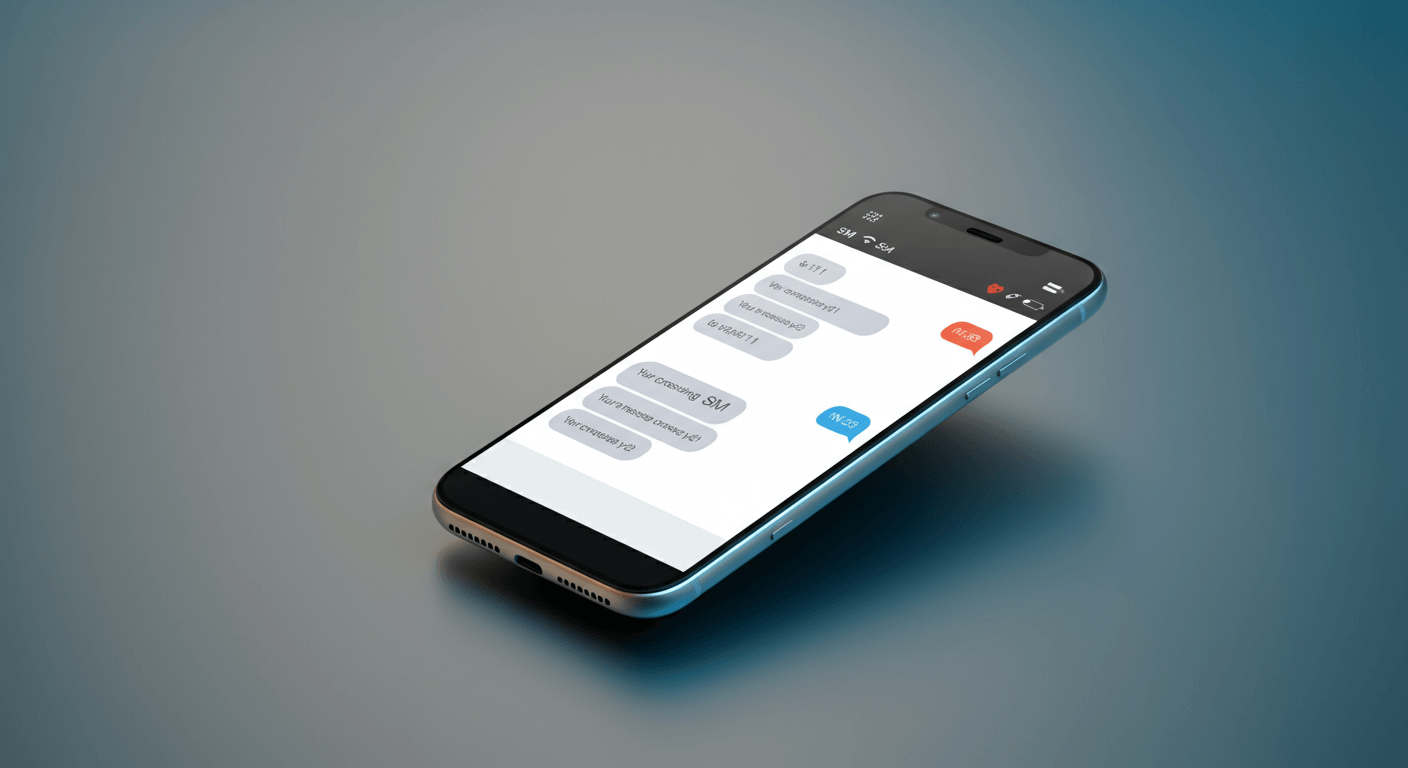
Message Structure and Length
Short messages are encouraged as long as they contain all the pertinent information. To avoid splitting the text, most SMS messages will need to be 160 characters or less. Be straight to the point and use crisp action-oriented language.
In every message, there should be a strong call-to-action. Whether the next action you would like them to take involves visiting a website, using a discount code, or even responding with information, having the following step be a clear one is very important, as is keeping it simple so your customers can follow through.
Personalization Strategies
Leverage customer data to tailor messaging beyond just adding first names. Again and again: Utilize previous purchase history, browsing data or location-specific details to craft relevant messages, at the right time. “Hi Sarah, your favorite skincare brand just restock” carries more weight than plain old promotional content.
Segment your market by purchase history, engagement and preference. Loyal customers might get exclusive previews of new products, and new customers could receive welcome series messages.
Timing and Frequency Guidelines
Send during business hours when people can interact and participate. Ignore morning or evening texts unless you’re in a time-sensitive industry such as food delivery or emergency services.
Respect your stated messaging frequency. If you said you’d provide weekly updates, don’t barrage candidates with daily messages without receiving an O.K. Being consistent is how you build trust and keep the unsubscribe rate down.
Launch Your First SMS Campaign
That first SMS campaign you send is a big indicator of how the rest are going to go. Plan thoroughly in advance to ensure you have a strong first showing and test systems and processes.
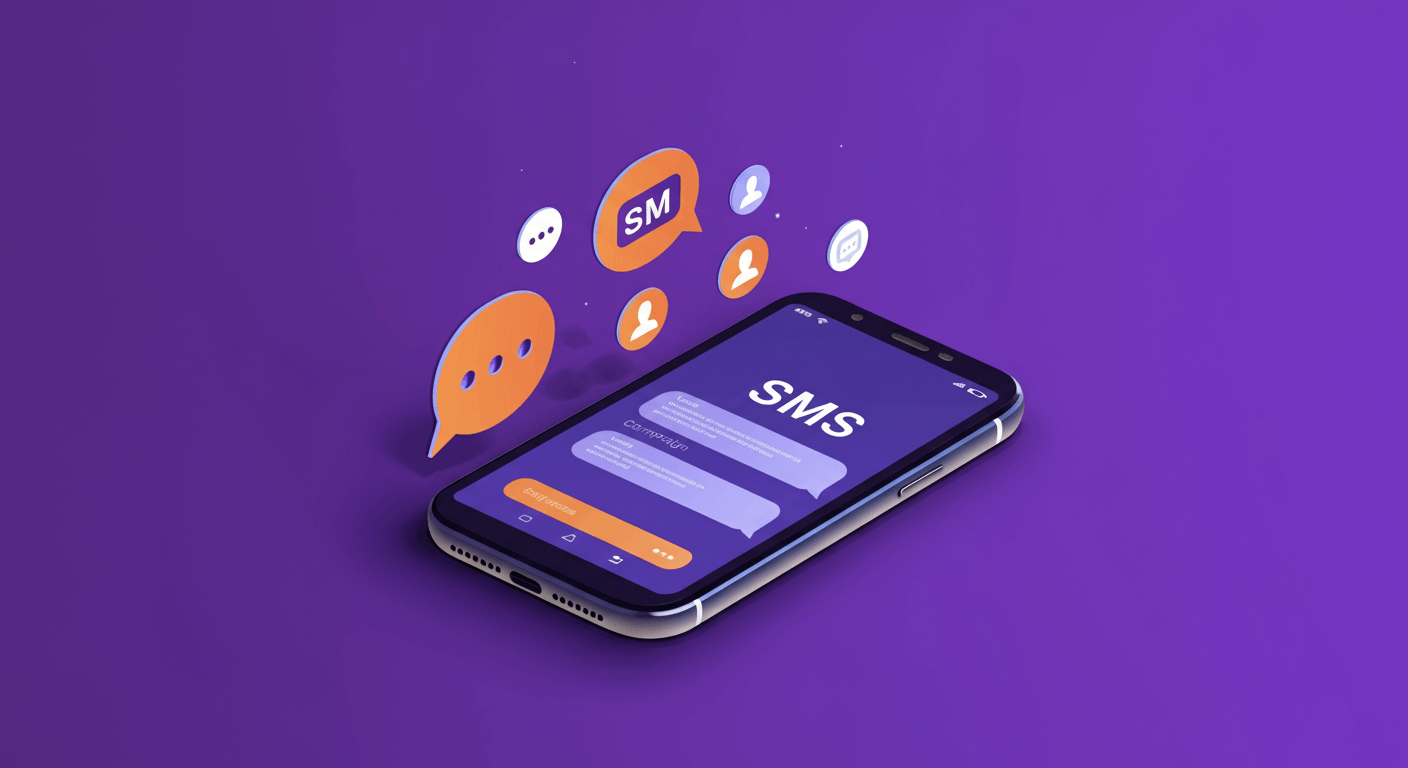
Welcome Series Setup
Develop a welcome series with multiple messages that gives new subscribers an introduction to your brand and SMS program. The initial message is a thank-you for signing up and the incentive should be given instantly. Send more follow-up messages over the following days to tell your brand story and showcase top products or services.
Set expectations in your welcome series around what and how often you’ll message. This transparency helps customers know what they’ve gotten themselves into and reduces the potential for later complaints.
Testing and Quality Assurance
Before release, test your messages on various devices and networks. What seems ideal on your iPhone may present another way to Android devices, or on other carriers. Send test messages from different phones to team members to catch formatting problems.
Make sure all such links work properly and that they direct the user to a page that’s easy to navigate on a mobile device. Bad mobile experiences or poor user experience in your mobile-content app can quickly erode the effectiveness of your SMS program.
Performance Monitoring
Monitor important metrics from your first campaign, such as delivery rates, open rates, click through rates, and conversions. These are the barometer metrics that will allow you fine-tune your future attempts, showing you what you are doing right and wrong.
Closely monitor the opt-out rate for the first few campaigns. High unsubscribe rates may signal problems with the content or distribution of a message that require further analysis and remedy.
Supercharge Your SMS Marketing with Automation and Outreach Options
Continuous improvement is what will take good SMS campaigns to great. Leverage data and dial in via customer feedback to optimize your model and amplify the impact of your program.
Advanced Segmentation Techniques
Combine the definition of behavioral segments past the simple demographics. Organize your customers by frequency of purchases, average order value, product purchase preferences, or level of engagement. These intelligent sections allow for the most personalized, tailored messaging.
Build on-the-fly segments that auto-update with every customer interaction. For instance, active purchasers could receive complimentary product recommendations, from their last purchase get free gift messages, and so on.
Automation and Workflows
Set up autoresponders based on your subscribers’ actions. Abandoned cart follow-ups, post-purchase follow ups, and birthday wishes can all be automated and stay personal.
Automate reply workflows based on customer responses. Those who text “HELP” should receive immediate information on aid available. If they express interest in a certain item, send them specific information about it and all the ways they can buy it.
Integration with Other Marketing Channels
Integrate SMS campaigns with your email marketing, social media, and advertising strategies. Consistent messaging across channels strengthens your brand and improves campaign performance.
Send SMS to promote other marketing channels. SMS can be used to drive new blog posts, social media contests, or email newsletter signups, all seemingly to work together as a cohesive marketing system.
Measuring SMS Marketing Success
It’s not just about surface level stats, good SMS is all about understanding the real impact of your messages on your business goals. Monitor both black reactions in the short term and long-term changes in customer behavior.
Key Performance Indicators
Track delivery rates to verify your messages are delivered to the recipients. Low delivery rates may also suggest problems with the quality of your list or your carrier reputation. CTR indicates message engagement; CR demonstrates true business impact.
Track revenue attribution to know the financial impact of your SMS program. Conversion tracking is available on most platforms which links text message clicks directly to an in-store sale, giving you an easy way to show ROI.
Customer Feedback and Satisfaction
Ask your SMS subscribers how they have felt and if they have enjoyed the experience. Inquire about frequency of messages, relevance of content and overall satisfaction. That feedback will help you alter your approach before these problems affect your entire program.
Track customer service requests as they pertain to SMS marketing. Complaints involving specific messaging can be used to help improve the program.
Building a strong digital marketing strategy in financial services requires a mix of personalized communication and scalable outreach. One effective tactic within this broader strategy is SMS marketing, which offers direct engagement and high open rates. By understanding how to start SMS marketing properly, financial brands can enhance their digital efforts and connect with audiences in a more immediate, impactful way.


